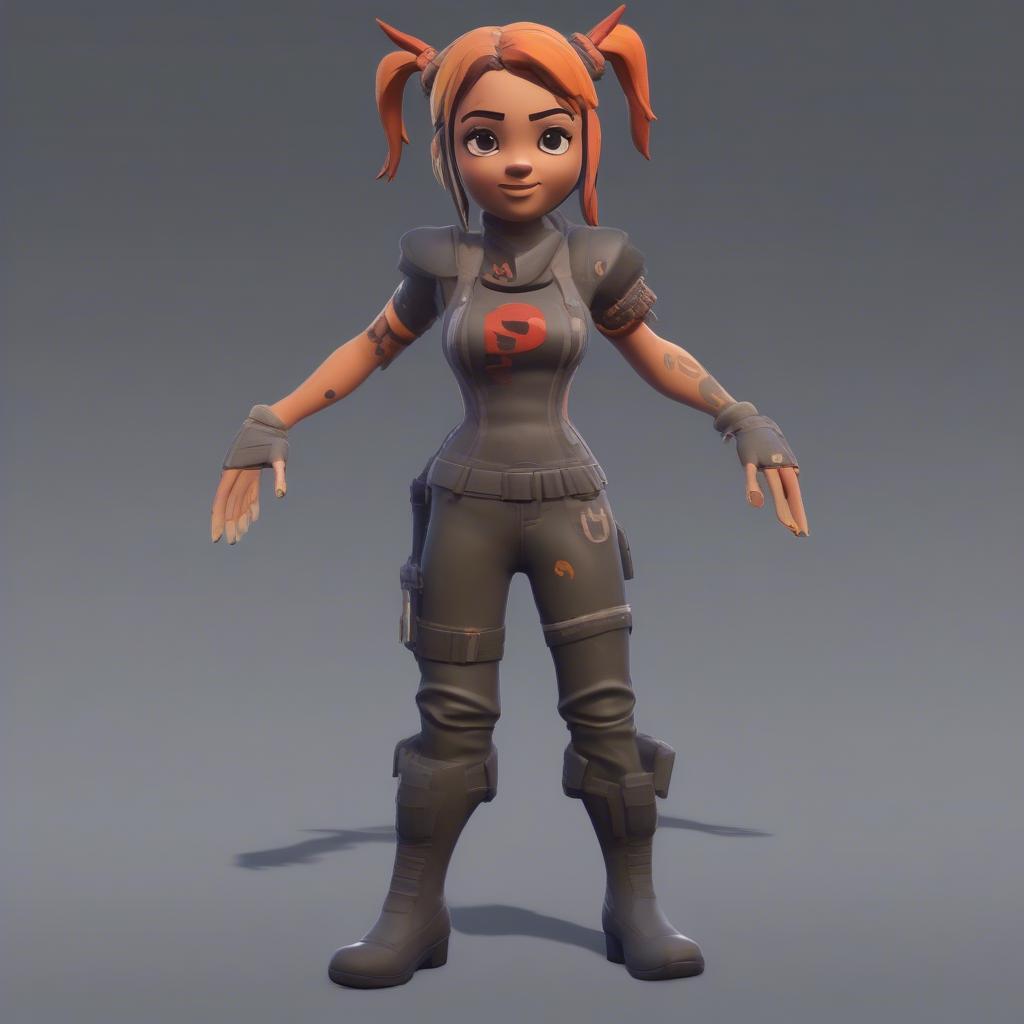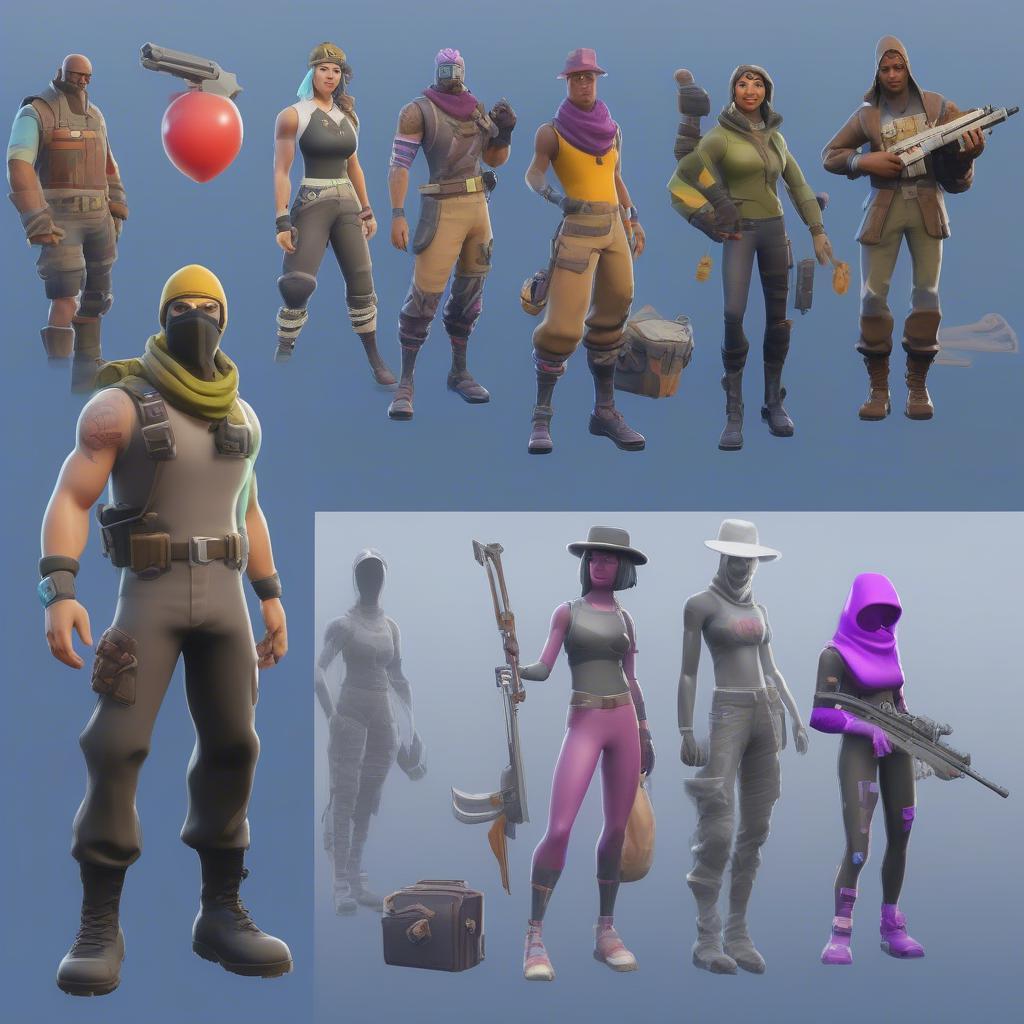Hey everyone, it’s Harmony Saunders here, your guide from Games Fortnite, and today we’re diving deep into the visual world of our beloved game. Have you ever wondered how those stunning concept art pieces transform into the actual in-game visuals we all know and love? This article will break down the differences, highlighting the creative process behind Fortnite’s iconic look. We will explore the journey from initial artistic ideas to the final interactive environments and character models.
From initial sketches to polished 3D models, Fortnite’s visual journey is a testament to the dedication and talent of the artists and developers at Epic Games. It’s fascinating to see the progression and compare how the ideas are interpreted and adapted for the dynamic gaming environment. We’ll be digging into these differences and give you the inside scoop on how these visuals are brought to life.
What is Concept Art in Game Development?
Concept art is the foundation of any game’s visual style. It’s where artists first bring their ideas to life, sketching out characters, environments, and items in a way that is both imaginative and practical for gameplay. For Fortnite, this stage is crucial for defining the game’s vibrant, cartoonish aesthetic. These artworks often are not polished and meant to give an idea of what the asset might look like. It’s a crucial part in game development to lay out all the ideas before going to the production stage.
- Early Stage Ideas: Concept art is all about exploration, testing different styles and ideas to see what fits best.
- Style Definition: These pieces define the game’s look and feel, setting it apart from other titles.
- Visual Blueprint: Concept art serves as a visual guide for 3D modelers, animators, and level designers.
“The beauty of concept art is that it allows us to explore wild ideas and push the boundaries of what’s possible,” – said Liam O’Connell, Senior Art Director.
How Concept Art Influences Fortnite’s Style
Fortnite’s unique cartoonish style is heavily influenced by its concept art. The bright colors, exaggerated shapes, and dynamic character designs all stem from the artists’ initial vision. These early designs often dictate the mood, tone, and even gameplay mechanics of the game, showcasing a blend of creativity and functionality.
- Color Palette: The vibrant and bold colors in concept art translate directly to the in-game visuals.
- Exaggerated Characters: Character designs often feature distinct shapes and proportions that make them instantly recognizable.
- Dynamic Environments: The overall look of locations is established in the concept phase, influencing the atmosphere of each level.
 fortnite concept art and in game comparison
fortnite concept art and in game comparison
The Transition From Concept to In-Game Graphics
The process of transforming concept art into in-game graphics is a complex one, involving several steps and the expertise of many different professionals. 3D modelers take concept art and create fully realized 3D models that can move and interact within the game environment. In-game models need to consider factors such as polygons, texture, animation, and performance optimization.
- 3D Modeling: Artists translate 2D concepts into 3D models using specialized software.
- Texturing and Shading: Textures add detail and depth to the models, making them feel real.
- Rigging and Animation: Characters are rigged with bones and then animated to move smoothly within the game environment.
Key Differences Between Concept Art and In-Game Assets
While both concept art and in-game assets aim to achieve the same visual goal, there are significant differences between them. Concept art prioritizes creativity and exploration, while in-game assets must balance aesthetics with performance requirements. The artistic freedom in the initial concept stage gives way to the technical limitations in game development.
- Artistic Freedom vs. Technical Constraints: Concept art is free to explore, while in-game art is limited by performance optimization.
- Level of Detail: Concept art often has intricate details, while in-game art needs to be simplified for real-time rendering.
- Functionality: In-game assets need to be interactive, with models designed to move, while concept art is static.
Exploring Key Visual Elements in Fortnite
Let’s examine specific visual elements to see the transition from concept to the final product. Examining character design will let us see how a character is first envisioned and then translated to the final, interactive version. We will also delve into how environments move from a sketch to a full, playable level, with its own distinct atmosphere.
Character Design: From Sketch to 3D Model
The transformation of characters from concept art to 3D models is a showcase of artistic skill and technical ingenuity. Concept art provides a sense of personality and style, while 3D models bring the characters to life, allowing them to interact within the game.
- Concept Sketches: The character begins as a sketch, exploring different poses, outfits, and facial expressions.
- Refining the Design: The chosen concept is refined, with artists working on the details and ensuring that it fits with the game’s tone.
- 3D Modeling: The 2D concept is turned into a 3D model, which requires skills and software to model and sculpt the character
- Texturing and Rendering: Textures are added, with lighting and shadow effects giving the character a sense of volume and depth.
- Animation and Rigging: Finally, bones are added to the model and animated to give the character movement and personality.
 fortnite character design process concept art to in game
fortnite character design process concept art to in game
Environment Design: From Concept to Playable Level
Similar to characters, the creation of environments for Fortnite is a detailed process. Concept art lays the groundwork by establishing a level’s atmosphere and layout, and then 3D level designers build the environment, ensuring that it aligns with gameplay needs.
- Initial Concepts: The initial concept sketches are used to set the overall feel and mood of the level.
- Level Layout: The environment is built on a virtual grid where everything is functional and logical
- Texturing and Shading: Assets in the environment are textured and shaded to make it appealing and match the concept designs.
- Lighting and Ambiance: Light is key for an immersive environment, and proper placement makes the levels feel lively.
“The goal is to bring the concept art to life in a way that feels both visually stunning and functional for gameplay,” says Anya Sharma, Lead Level Designer at Epic Games.
The Impact of In-Game Limitations
While the concept art might look stunning, developers and 3D artists must deal with some limitations when it comes to creating the in-game version. Performance issues are a big consideration, as the in-game assets must be optimized to run smoothly on different platforms, which can lead to changes in details and level of texture quality. The goal of creating the in game model is to find a balance between visual fidelity and the practical limitations of real-time rendering.
- Performance Optimization: In-game models must be optimized to run smoothly on different platforms.
- Polygon Count: Limiting the number of polygons in the model is necessary to improve the performance.
- Texture Sizes: Textures need to be compressed, so the game can run with consistent fps on all platforms.
 fortnite environment design process from concept art to in game
fortnite environment design process from concept art to in game
Balancing Visual Fidelity and Performance
Balancing visual fidelity and performance is an ongoing challenge for game developers. While they want to create the most visually appealing and impressive models, they also have to ensure that the game is not lagging or difficult to run. This trade off is very important for a consistent gaming experience across platforms. The key is to maximize visual impact while minimizing performance cost.
- LOD (Level of Detail): Using different models at different distances to save processing power.
- Texture Optimization: Using compressed textures to save space and optimize the game.
- Culling: Removing things that the player can’t see on screen, to ensure good game performance.
Why the Differences Matter
Understanding the differences between concept art and in-game graphics can give us a deeper appreciation for the complexity of the game development process. It’s fascinating to see the creative vision translated to the final version of the game and realize the countless hours that it takes to bring a game like Fortnite to life.
- Appreciating the Creative Process: We gain an understanding of the game development from concept to real model.
- Understanding Technical Limitations: Seeing what goes behind the scenes gives us appreciation for game optimization.
- Fostering Deeper Connection: This connection brings gamers closer to the art, its creation and the process that goes into development.
 fortnite visuals concept art to final in game comparison
fortnite visuals concept art to final in game comparison
Conclusion
In summary, the comparison between concept art and in-game assets in Fortnite is a journey through the creative and technical aspects of game development. Concept art is about exploring ideas, while in-game graphics focus on practical implementation and performance optimization. Both elements are critical for creating a cohesive and immersive experience. The hard work that artists put into bringing the initial ideas to life is what allows us to have a great gaming experience in Fortnite.
We, at Games Fortnite, hope that you now have an enhanced understanding and appreciation of the visual journey of our favorite game. We encourage you to dive back into the game with fresh eyes and perhaps even explore the process of how your favorite games came to be. Keep gaming, and stay tuned for more insights here at Games Fortnite!
